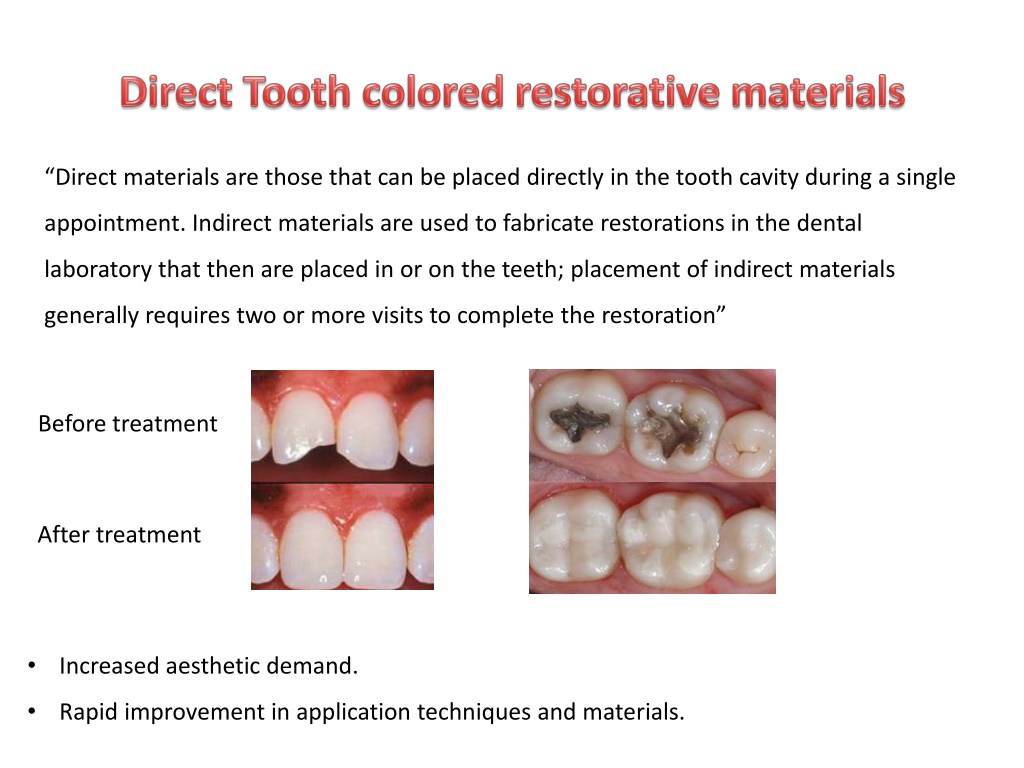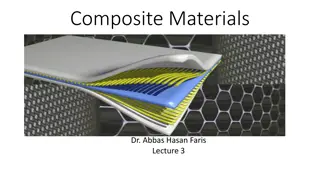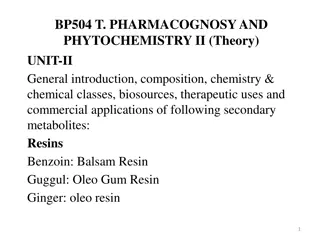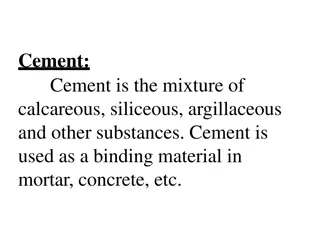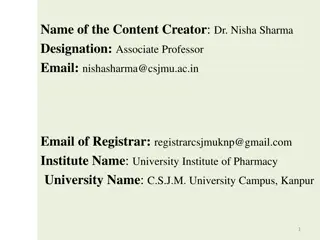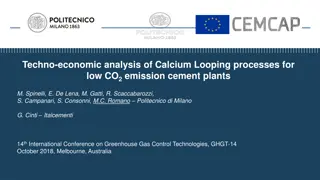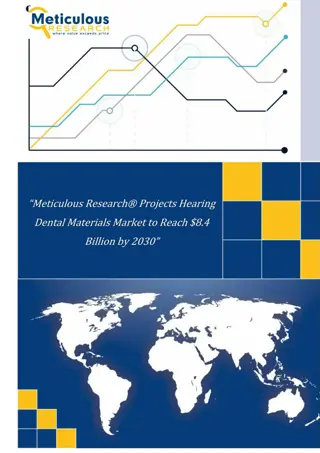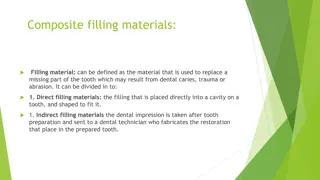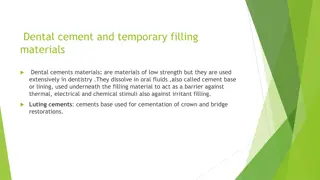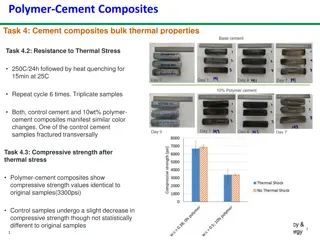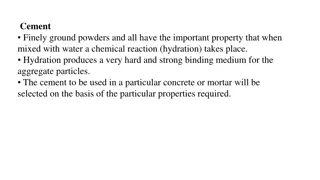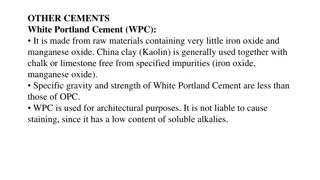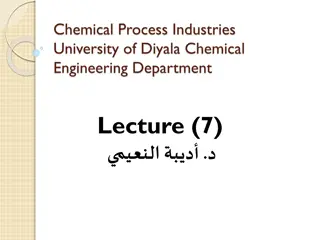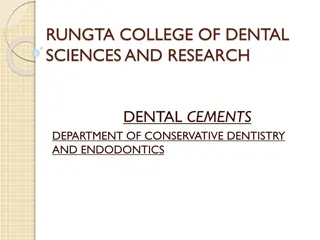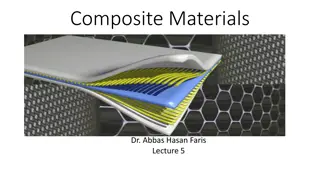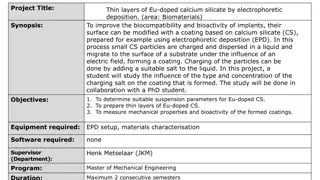Evolution of Dental Restorative Materials: From Silicate Cement to Composite Resins
Various dental restorative materials have evolved over the years, from silicate cement to composite resins. Silicate cement, introduced in 1871, offered advantages like matching tooth color but had drawbacks such as dental pulp irritation. Unfilled acrylic polymers, developed around 1945, showed improved stability but lacked abrasion resistance. Composite resins, introduced in the late 1950s, offered superior mechanical properties, wear resistance, and reduced shrinkage compared to earlier materials. They consist of a resin matrix, coupling agents, and fillers. Each material has its strengths and limitations, influencing their usage in modern dentistry.
Download Presentation

Please find below an Image/Link to download the presentation.
The content on the website is provided AS IS for your information and personal use only. It may not be sold, licensed, or shared on other websites without obtaining consent from the author. Download presentation by click this link. If you encounter any issues during the download, it is possible that the publisher has removed the file from their server.
E N D
Presentation Transcript
Direct materials are those that can be placed directly in the tooth cavity during a single appointment. Indirect materials are used to fabricate restorations in the dental laboratory that then are placed in or on the teeth; placement of indirect materials generally requires two or more visits to complete the restoration Before treatment After treatment Increased aesthetic demand. Rapid improvement in application techniques and materials.
Silicate cement: introduced in 871. Aluminosilicate powder and a phosphoric acid liquid. The silicate has several advantages over the amalgam restoration: Matching tooth color Ease of manipulation and; Anti-caries activity due to high fluoride content. Disadvantages: It irritates the dental pulp due to its phosphoric acid content, and Has an early clinical failure, which mostly related to its dissolution in oral fluids, Loss of translucency, Surface crazing, and Lack of adequate mechanical properties
Unfilled acrylic polymers(acrylic resins) introduced about 1945 and were improved so that they were in moderate usage in the 1960. based on polymethyl methacrylate (PMMA) Advantages: less soluble in oral fluids, less susceptible to fracture, and More color stable than silicate materials. Disadvantages: They had low abrasion resistance, high coefficient of thermal expansion and contraction. Not bond to the tooth structure.
Composite Started in late 1950s and early 1960s, when Bowen began Epoxy resins reinforced with filler particles. Advantages: better mechanical properties and higher abrasion and wear resistance, lower polymerization shrinkage and lower coefficient of thermal expansion than that of unfilled resins.
Composite RESIN MATRIX COUPLING AGENT NON-ORGANIC FILLERS gamma-methacryloxy-propyl-trimethoxy-silane Pure silica particles with different sizes Monomers; Bis-GMA, UEDMA, TEGDMA Polymerization initiator/activator Benzoyl peroxide, tertiary amine activator, Camphorquinone LOAD SIZE Polymerization inhibitor Roughness Viscosity Hydroquinone Ultraviolet radiation absorber 2-hydroxy-4-methoxy benzophenone
POLYMERIZATION REACTION Chemical activation (self-curing composite resin) Long setting time Voids in the final restoration A higher probability of long term discoloration after 3-5 years of intraoral service. Difficult handling on placement especially at class IV cavities. More finishing time. Few shade options
Visible Light activated composite resin (1970) single-component pastes, require no mixing, reduced porosity, better resistance to wear and abrasion. The working time is virtually that chosen by the clinician, Wide range of shade options
A combination of chemical cure and light cure composites Dual cure composite. Slow chemical curing process starts on mixing (BP) then accelerated by light (CQ) FOR CEMENTATION VENEERS AND CERAMIC INLAYS OR ONLAYS
Classification of dental composites Based on filler size Macrofilled (conventional) Size 8-12 m Microfilled Hybrid Size 0.04 m Size 0.6-1 m Load 50 % Load 75-80 % Load 70-80 % Hardness Hardness Hardness Surface roughness Surface roughness Surface roughness
Classification of dental composites Based on filler load Flowable composite load 30 % good wettability, Good handling properties, and Can be used only up to a thickness of 6 mm at one time. Packablecomposite Fiber reinforced composite
